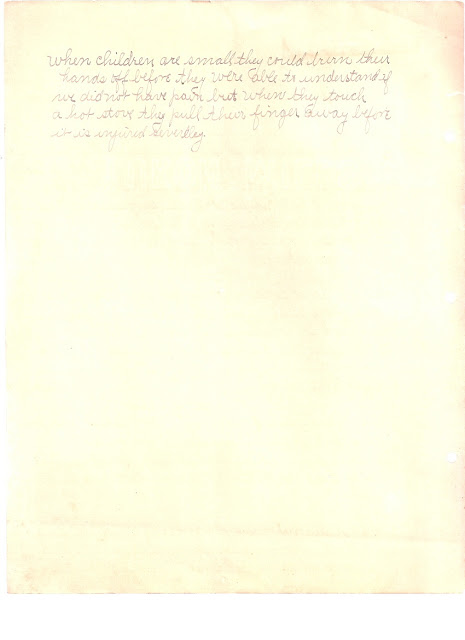Originally published on genealogyatheart.blogspot.com on 20 Sep 2015.
Elsie Johnson was an 8th grade student in Hobart Township, Lake County, Indiana in 1910. My past several posts have been highlighting her state mandated final exams. Today the focus is geography.
The test questions are glued to the upper left hand corner. It appears that 8th graders were required to complete the 7th and 8th grade year questions. I like that as retention of material presented in the previous year can be measured.
The continents of Africa and Australia were studied extensively in 7th grade. The 8th grade test questions were determined by the teacher; please view the third test page for those responses. In 8th grade, students studied South America and Asia. How interesting Europe is barely mentioned, especially since many of Elsie’s generation would find themselves there in just a few years under the adverse circumstances of World War I! I also find it odd that there is such a limited study of North America and no mention of Antarctica,
Geography is still taught in middle school today through Social Studies but recently in Florida, civics was incorporated into the 7th grade curriculum which cut out some Asia and Africa material. Those lessons were transferred to high school. Since Elsie terminated her education in 8th grade, she would not have learned those lessons today.
Of all the tests analyzed I have the most criticism for this one. Question 7 hints at an answer for question 2. Question 10 asks about tobacco. My readers know that the dangers of tobacco use was a test question on Elsie’s Physiology exam. I equate asking where tobacco was grown to asking today’s students where heroin is produced. To test knowledge of export items I think other crops could have been selected.
My most surprising reaction was to item 9. I understand that the test was developed in 1910 but I still was shocked at asking students to classify people based on color. Was the objective to make geography “scientific” as in the world of science where one would classify species? I don’t know.
Think about this – the test was administered during the Jim Crow, 45 years after the end of the Civil War. It took another 50 years, the 1960’s, before this thought process began to change and yet we still classify students. Today, parents are asked if their children are Asian, Hispanic, Multi, Native American with Black and White remaining as options.
Genealogists know that the vast majority of our DNA is multi. My blue eyed blonde hubby shows ancestry from Chad yet he would be classified as white. I personally think it’s time to move past the labels. I understand in the health world nationality can be important in identying serious health conditions that need to be addressed. Yet, looking at someone’s skin tone could miss important information, such as sickle cell anemia or lack of Vitamin D absorption. Beyond health, there is no reason to be concerned with skin color.
As the world’s first melting pot, I think it’s time that the US moved beyond racial classification. With the current changes taking place in Europe, I think the US needs to set this practice into a new direction. In 100 years from now what will the genealogical community say about us as a society?


















